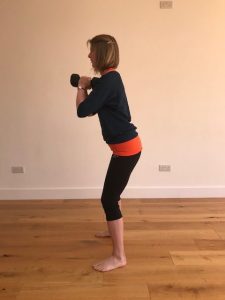
Osteoporosis is a condition where your bones become less dense and therefore weaker as the mineral density drops below the normal level for your age.
Normally your bone density increases until about age 20 and stays the same until age 35. From there on everyone’s bones starts to slowly become less dense. If someone loses their bone density they have a greater risk of fractures, even with minimal trauma.
Who gets osteoporosis?
Some people lose their bone density faster than others. Generally women are more prone to osteoporosis than men because of hormone changes in menopause. Other risk factors are:
- family history of osteoporosis
- previous eating disorders such as anorexia
- digestion disorders such as Crohn’s
- long term steroid use for example for asthma conditions
- heavy drinking or smoking
- long term bed rest.
Menopause and osteoporosis
When women hit menopause the body slows down the production of the hormone oestrogen. Oestrogen helps to keep your bone density high. Women who hit menopause early have a greater risk of osteoporosis. Taking HRT (hormone replacement therapy) can help to prevent osteoporosis, however, the effect only tends to last whilst you’re taking it.
Prevention
Genetic factors play a significant role in determining whether an individual is at heightened risk of osteoporosis. However, lifestyle factors such as diet and physical activity also influence bone development in youth and the rate of bone loss later in life.
After your mid 20’s, bone thinning is a natural process and cannot be completely stopped. The thicker your bones, the less likely they are to become thin enough to break. Young women in particular need to be aware of their osteoporosis risk and take steps to slow its progress and prevent fractures.
Childhood and adolescence
It’s never too early to invest in bone health! The prevention of osteoporosis begins with optimal bone growth and development in youth. Bones are living tissue and the skeleton grows continually from birth to the end of the teenage years, reaching a maximum strength and size (peak bone mass) in early adulthood, around the mid 20’s.
Children and adolescents should:
- ensure a nutritious diet with adequate calcium intake – our bones are made of it
- avoid protein malnutrition and under nutrition
- maintain an adequate supply of vitamin D. Vitamin D helps your body absorb calcium. It can be hard to get all the vitamin D you need from food, especially if you have a vegetarian or vegan diet. You can get vitamin D from being out in the sun, however, in the winter months it can be useful to take supplements if you know you might be at risk of vitamin D deficiency
- participate in regular physical activity
- avoid the effects of second hand smoking.
Adulthood
Bone mass acquired during youth is an important determinant of the risk of osteoporotic fracture during later life. The higher the peak bone mass, the lower the risk of osteoporosis. Once peak bone mass has been reached, it’s maintained by a process called remodelling. This is a continuous process in which old bone is removed (resorption) and new bone is created (formation). The renewal of bone is responsible for bone strength throughout life.
During childhood and the beginning of adulthood, bone formation is more important than bone resorption. Later in life, however, the rate of bone resorption is greater than the rate of bone formation and results in net bone loss, a thinning of your bones.
Any factor which causes a higher rate of bone remodelling will ultimately lead to a more rapid loss of bone mass and more fragile bones. The nutritional and lifestyle advice for building strong bones in youth is just as applicable to adults to.
Adults should also :
- ensure a nutritious diet and adequate calcium intake and supply of vitamin D
- avoid under nutrition, particularly the effects of severe weight loss diets and eating disorders
- participate in regular weight bearing activity
- avoid smoking and second hand smoking
- avoid heavy drinking.
Diagnosis
Because bone loss is gradual and painless, there are usually no symptoms to indicate a person is developing osteoporosis. This is why osteoporosis is often referred to as the silent disease. Often the first symptom of osteoporosis is a fracture. Most commonly, osteoporotic fractures occur at the spine, the wrist or the hip, although osteoporotic fractures can occur in other bones as well.
While most limb fractures (such as at the wrist or hip) are obvious, spinal fractures can be more difficult to diagnose. This is because they might be painless or, if there is pain, a person may not know it is caused by a fracture due to the many different causes of back pain. More obvious signs of spinal fractures are:
- loss of height
- development of a curved upper back (sometimes called a Dowager’s Hump).
Since there are usually no outward signs of osteoporosis developing, doctors will often recommend diagnostic testing depending on your age and if you have other risk factors for the disease.
Living with osteoporosis doesn’t have to be a life sentence. There are medications and lifestyle changes available to help you manage your osteoporosis. These can allow you to enjoy an active lifestyle. In our Top Tips article we talk about exercise and activity for osteoporosis and throughout this month we will be looking at some weight bearing and weight training exercises for all.
Exercising is important for your body to keep its bone density and encourage a demand for stronger bones. It’s also good for your heart!

